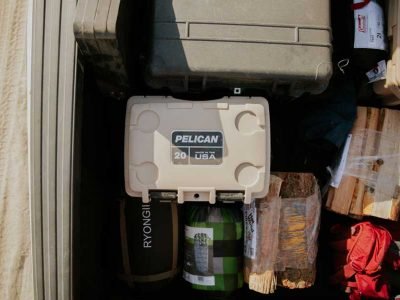Pike are one of the most popular sport fish world wide. From their sharp teeth to their big sizes, pike offer anglers thrilling fishing trips with huge upside. But pike fishing can be intimidating for beginners, so let’s break it down and make it simple for you.
Physical Characteristics of Pike
Ranging from 20 to over 50 inches, these predators feature a streamlined body with a camouflaging coloration—dark greenish to olive backs adorned with lighter spots. Their large head, pronounced snout, and needle-like teeth make them efficient hunters. Identifying features include an elongated dorsal fin, a distinctive anal fin, and a deeply forked tail, contributing to their powerful swimming abilities.
Pike Habitat
Pike thrive in diverse freshwater environments, favoring locations with ample vegetation, fallen trees, and rocky structures for ambush hunting. Weedy areas also serve as prime habitats, where their natural camouflage provides effective concealment.
Pike Behavior
Pike are ambush predators, patiently waiting near structures or vegetation to strike passing prey. Their keen senses, including large eyes and a lateral line, aid in detecting vibrations for locating meals. Opportunistic feeders, pike prey on various fish, displaying increased aggression and territorial behavior during the spring spawning season.
Gear for Pike Fishing
There are two main gear considerations you need to make. First, pike can get very big and fight very hard. So you need heavier duty fishing gear such as a heavy action rod and 60+ lb test line. Second, pike have sharp teeth that can cut your line. Using a wire leader to connect the line to lure will prevent pike from biting through you line.
Best Lures for Pike
- Spoon: Spoon lures, with their flashy, concave design, perfectly mimic the erratic movement of injured fish. Versatile in application—casting, trolling, or jigging—they consistently attract pike with their lifelike flash.
- Swimbait: Swimbaits, replicating the natural swimming motion of prey fish, prove irresistible to pike. Their varied sizes and colors, along with flexible rigging options, allow for adaptable presentations to match prevailing water conditions.
- Buzzbait: Ideal for topwater excitement, buzzbaits create surface commotion with a spinning blade, mimicking distressed prey. Matt from https://barbcatchfishing.com/ has had tons of success with buzzbaits and caught multiple trophy pike on this topwater. Best employed during early mornings or late evenings when pike are closer to the surface, buzzbaits elicit thrilling strikes from these aggressive predators.
Natural Bait Consideration
When opting for live bait, minnows and shiners prove effective with their natural swimming motion, making them enticing for pike. Suckers and chubs, especially for larger pike, can be rigged with slip sinkers or bobbers to target deeper areas. Perch and sunfish are also reliable choices, hooked through the back or tail for a lifelike presentation.
For dead bait options, consider using whole or cut minnows for their scent and versatility in rigs like tip-ups or bottom rigs. Smelt and herring, particularly in frozen form, emit strong scents, attracting pike from a distance. Freshly cut baits, like sections of larger fish, can be rigged on circle hooks or treble hooks at varying depths to entice pike strikes.
Pike vs Pickerel
These two species are often mistaken for one another. They certainly look very similar, but there are ways to tell them apart. First off, pike reach much larger sizes. Pickerel will only ever grow to about 15 lbs, while pike can reach upwards of 50 lbs. Pickerel also tend to be much darker, with a maze-like pattern on their body and a vertical, black line under their eye. So while pike and pickerel are very similar, it is important to know exactly which one you are fishing for to maximize your success.
When Do Pike Spawn?
Pike spawn in much colder temperatures than most other sport fish. They will begin their spawn in as cold as 40 degree water temperatures. The exact time of year that this temperature occurs will depend on where you live, but it usually ranges from February to May. In the most northern countries, they may spawn as late as June, but this is uncommon.
Appeal of Pike Fishing
Well, who doesn’t want to catch a big, toothy predator. Battling with a monster fish is one of the most thrilling experiences any angler can have. Pike are both big and extremely aggressive, which makes for an incredible fight trying to get them into the boat. Northern pike are also very, very beautiful fish. Holding a healthy pike in your hands makes for a great picture and a great experience for all anglers.
Tying this Off
While pike fishing can be a bit difficult and intimidating, it is well worth the effort. There is no freshwater fishing experience quite like battling a big Northern pike. The added excitement, thrill, and danger of the pike’s big, sharp teeth is the cherry on top of these angling ventures. As a beginner, don’t expect to start catching trophy pike straight out of the gate. Be patient, learn as you go, and trust the fishing process.












